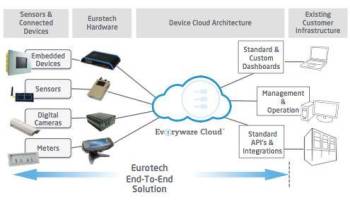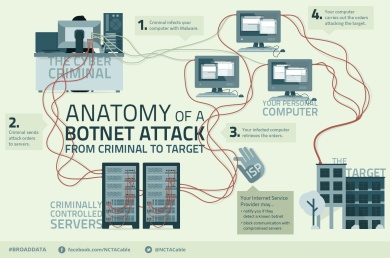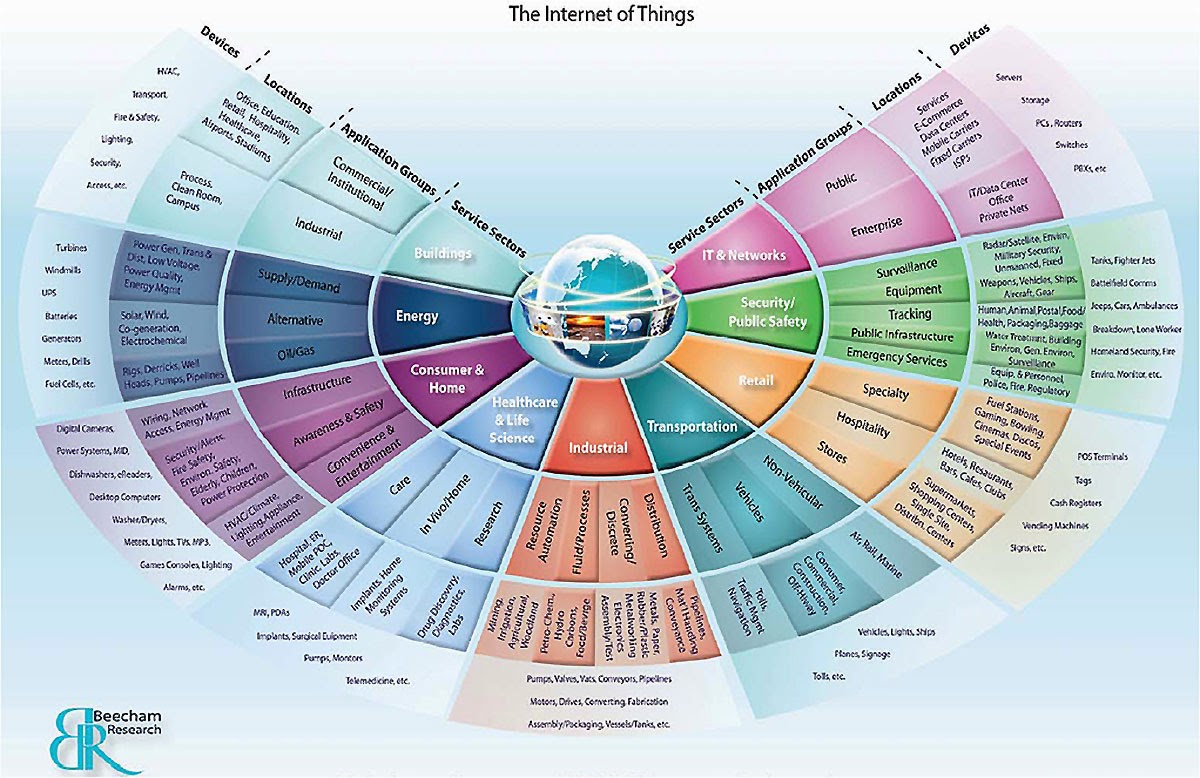Blog about the latest in Mobile Commerce, Mobile Devices, Mobile Security and Social Media.
Wednesday, February 19, 2014
Sunday, February 16, 2014
Top 23 African Start-Ups 2014
The Top 23 African Start-Ups in 2014 Are:
- The Able Wireless Company aims to stream paid-for content for $6 per month using a household set-top box. It is an edge-of-network service that ‘delivers content over a wireless network through a secure device, reducing 83% of capital and operational costs for current network providers, creating a legitimate distribution system
- Karibu Solar Power The Karibu solar system is a small standing lamp, that is split into three components: the lamp, the battery and the small solar panel. The merchant ‘rents’ out the lamp and battery for a few weeks, before the renter owns the whole device, including the charger. Using the same small amounts that are typically used to buy kerosene, Karibu provides light but also power to charge cellphones READ MORE
Labels:
2014,
Africa,
Ecommerce,
education,
environment,
Mobile Apps,
Start-Up,
StartUp,
Technology
Thursday, February 13, 2014
The Common Myths Of Unlimited Bandwidth Offers
courtesy of www.insidedevices.org
In the world of today access to the internet is a bare necessity for anyone. Most of us own multiple devices that require Internet access (Laptops, Desktops, Smartphone, Tablets, Fablets etc.) We are all looking to connect those and want to have the fastest connection available. So what do we do? We look for a company (ISP) offering us the best internet package. All of us start looking for a package that is cheap and offers the maximum speed and data transfer rates commonly known as bandwidth. Broadband means a transfer rate of 256Kbit/s or higher. To conclude: an Internet connection with a larger bandwidth can move a set amount of data (say, a video file) much faster than an Internet connection with a lower bandwidth, hence the broad(er)band connection.
Does Unlimited Bandwidth Exist?
Well, it is real when you look at the marketing strategies of various web hosting service providers across the world, but in reality there is nothing called unlimited bandwidth. It is always limited, either by data cable, internet or network card.
What?! Yes Think about it!
Bandwidth is not free! READ MORE
Labels:
2014,
Devices,
Ecommerce,
Internet,
internet of things,
Mobile Marketing,
Mobile Phone,
Online Selling
Sunday, February 9, 2014
Monday, February 3, 2014
IoT: 2 Alternative Network Communication Channels for Cloud
 Most systems targeting the Internet of Things (IoT) utilize web-based cloud services to link users to devices and their data. But the Net, with its http and graphical interfaces, may not always be needed. At least one company has created an IoT device that communicates via simple text messaging.
Most systems targeting the Internet of Things (IoT) utilize web-based cloud services to link users to devices and their data. But the Net, with its http and graphical interfaces, may not always be needed. At least one company has created an IoT device that communicates via simple text messaging.
The startup FizzJelly is offering cellular-connected devices for monitoring a range of sensors. These are hobbyist devices, intended for experimenters and developers to create their own IoT systems. The systems are Arduino-compatible and fully open for experimentation and customization.
So far, this sounds like many other IoT offerings. What is different about this start up, is its method for connecting with the user. There is no mobile app or web service associated with FizzJelly. Instead, it uses (SMS) messaging for information exchange. This makes the system compatible with more than 80% of all mobile phones (smart or otherwise) now deployed. Talk about penetration rate!
1. TEXT Messaging (SMS) It is important to understand that the various sensors you establish in your network work READ MORE -->
Sunday, February 2, 2014
IoT: Top 5 M2M Key Challenges for 2014 and beyond
The Internet of Things (IoT) is based on the implementation, integration and use of Machine-to-Machine (M2M)Communication powered by the Internet. The philosophy is basic and for the IoT to succeed; the relationship device/machine-internet-end user has to be integrated. The reality however is very different. Major standards development organizations, including the ETSI, agreed on a common M2M service layer, oneM2M, in January 2012 as part of a global initiative to drive M2M standardization, two years down the line, progress has been made but not on the scale hoped for.
Top 5 M2M Key Challenges For 2014 And Beyond
- Ecosystem: The ecosystem faces numerous implementation challenges.Existing M2M solutions are highly fragmented and dedicated only to singular applications, as a result it will slow down the development of the Global M2M Market.
- Interoperability & Capability: READ MORE
Labels:
2014,
Capability,
Devices,
IoT,
M2M,
Mobile Devices,
www.insidedevices.org
Saturday, February 1, 2014
IoT: The Philosophy of the Net is Dead
"The problem that we now face is that the internet into which IoT is being born is philosophically very different to the internet into which the web was born."
Internet vs. IoT: A Closer Look at Key Philosophies
The Internet of twenty-plus years ago and prior was a place of free love and open standards.Coming from academia where commercial pressures were low, we moved into the era where internet connectivity onto PCs was the norm --The introduction of Windows 95 -- The way we as a society put the internet to use, has had an uneasy relationship with this "free love", uncommercial philosophy. Think back on how we us get our hands on any type of material ( , studies, music, video etc) for free. In line with the academic philosophy and its influence on the net that information should be freely available for anybody who took an interest in it. For the information producers it was a challenging time as some commercial realism had to be added.
The Internet Of Things (IoT) uses the internet READ MORE
Labels:
Android,
Ecommerce,
Internet,
internet of things,
IOS,
IoT,
Mobile Devices
Friday, January 31, 2014
Internet of Things: BotNets exist. ThingBots do not
 On the 16th of January 2014 Proofpoint (Leading Security Firm) claims to have uncovered what could be the first proven Internet of Things (IoT)-based cyberattack involving conventional household “smart” appliances. The global attack campaign involved more than 750,000 malicious email communications coming from more than 100,000 everyday consumer gadgets such as home-networking routers, connected multi-media centers, televisions and at least one refrigerator (What? A FRIDGE!) that had been compromised and used as a platform to launch attacks.
On the 16th of January 2014 Proofpoint (Leading Security Firm) claims to have uncovered what could be the first proven Internet of Things (IoT)-based cyberattack involving conventional household “smart” appliances. The global attack campaign involved more than 750,000 malicious email communications coming from more than 100,000 everyday consumer gadgets such as home-networking routers, connected multi-media centers, televisions and at least one refrigerator (What? A FRIDGE!) that had been compromised and used as a platform to launch attacks. Just as personal computers can be unknowingly compromised to form robot-like “botnets” that can be used to launch large-scale cyberattacks, Proofpoint’s findings alledge that cyber criminals have begun to commandeer home routers, smart appliances and other components of the Internet of Things and transform them into “thingbots” to carry out the same type of malicious activity. Cyber criminals intent on stealing individual identities and infiltrating enterprise IT systems have found a target-rich environment in these poorly protected internet connected devices that may be more attractive and easier to infect and control than PC, laptops, or tablets.
Just as personal computers can be unknowingly compromised to form robot-like “botnets” that can be used to launch large-scale cyberattacks, Proofpoint’s findings alledge that cyber criminals have begun to commandeer home routers, smart appliances and other components of the Internet of Things and transform them into “thingbots” to carry out the same type of malicious activity. Cyber criminals intent on stealing individual identities and infiltrating enterprise IT systems have found a target-rich environment in these poorly protected internet connected devices that may be more attractive and easier to infect and control than PC, laptops, or tablets.
Does “ThingBot” excist? [----> Read More]
Thursday, January 30, 2014
How To Protect Your Smartphone or Tablet in 2014
until 2011 PC's and Laptops where mainly targeted by virusses. Until then Mobile devices have flown under the threat radar with PCs mainly taking the abuse. As a result, many smartphone and tablet owners give little thought to the risks that lurk behind deceivingly harmless apps.
It's not a surprise that smartphones and tablets are no safer from invasions than computers. A digital device is a digital device, regardless of its size and portability. Nonetheless there are a number of ways you can protect your phone or tablet (DO) and there are a number of things you should be aware (DON'T) which I will list below:
READ MORE: HERE
READ MORE: HERE
Wednesday, January 29, 2014
The Internet of Things: Top 5 Device Security Tips VISIT
blog courtesy of www.insidedevices.org
Gates’ could control about anything in his house by the tap of his finger, whilst driving his car 20 miles away from his house.
Welcome to the “The Internet of Things“(IoT) that does represent a revolution happening right now. All kind of companies – not just technology and telecommunications firms – are linking “things” as diverse as smartphones, cars and household appliances to industrial-strength sensors, each other and the internet. The technical result may be simple features such as intercommunication and autonomous machine-to-machine (M2M) data transfer, but the potential benefits to lifestyles and businesses are unprecedented.
Ofcourse there is a “But”….with great opportunity comes great responsibility. Along with its conveniences, the IoT will be exposed to unprecedented security challenges: data privacy, safety, governance and trust.
What Are The Main Security Loopholes?
Security loopholes can occur anywhere in the IoT; but you can devide into two groups:
Data Risks: all smart devices will transmit data to a storage point before (in most cases) a bulk upload to the provider, often with outdate security settings.
Privacy Risks: all our smart devices collect, aggregate and transmit our user data, even tiny items of data in aggregate can identify, define, and label you without your knowledge.
What Can You Do To Protect Your Data and Privacy?
- Audit the devices you own.
- Secure your device. If a device is connected to your network, it means that it is potentially accessible over the internet.
- Verify the security settings on any device you purchase. If it is remotely accessible, disable this feature if it isn’t required
- Change any default passwords to something only you know. A long combination of letters, numbers and symbols will generate a strong password.
- Check the manufacturer’s website to see if there are updates to the device’s software. If security vulnerabilities are discovered, manufacturers will often patch them in new updates to the software. PATCHING IS EVERYTHING
What Is The Best Example Day-To-Day Example of A Device That Poses A Risk To Our Data and Privacy?
 The ATM, whether it is operated from North America, Europe, Africa, South-America, Asia or Australia; the majority is operated on a Windows XP platform. Microsoft announced that by April 8th 2014 it will stop releasing security patches. There are an estimated 3.000.000 ATM’s in the world!
The ATM, whether it is operated from North America, Europe, Africa, South-America, Asia or Australia; the majority is operated on a Windows XP platform. Microsoft announced that by April 8th 2014 it will stop releasing security patches. There are an estimated 3.000.000 ATM’s in the world!
Read the full article here
Subscribe to:
Posts (Atom)


